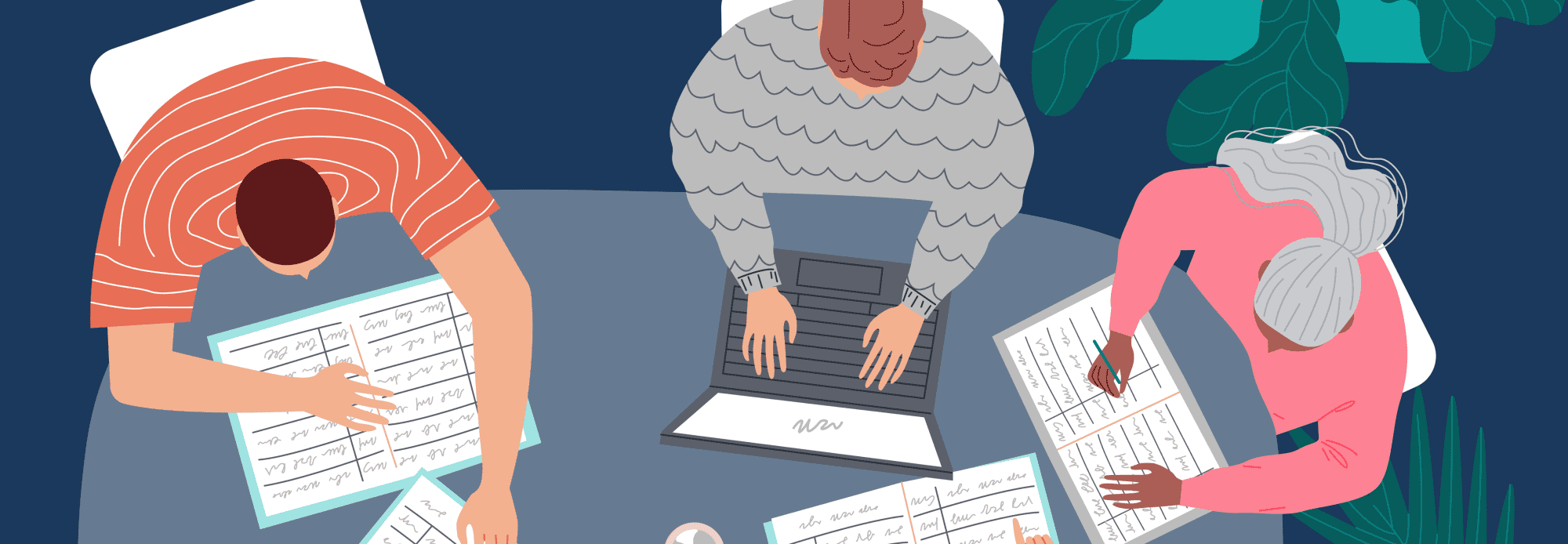Why It’s Important
Much of the language we use to refer to college students still carries assumptions about this diverse group.
According to a 2015 report by the National Center for Education Statistics,1 74% of all U.S. undergraduates possessed characteristics that could qualify them as “nontraditional” by typical definitions during the 2011-2012 academic year. Some of these characteristics included being a caregiver, starting school over the age of 25, working full time while attending school, attending school part time, and not having a high school diploma.
When language for and about students fails to consider these populations, large groups of people and their experiences are excluded.
According to a 2015 report by the National Center for Education Statistics,1 74% of all U.S. undergraduates possessed characteristics that could qualify them as “nontraditional” by typical definitions during the 2011-2012 academic year. Some of these characteristics included being a caregiver, starting school over the age of 25, working full time while attending school, attending school part time, and not having a high school diploma.
When language for and about students fails to consider these populations, large groups of people and their experiences are excluded.
Age
While much of the attention on ageism focuses on bias and discrimination against older adults, younger people also face ageism, including ageist language.2 Younger people are also unprotected by federal workplace anti-discrimination laws (which only protect older workers)3 even though a 2019 Glassdoor survey4 found more younger people experience ageism in the workplace than older people.
Take care not to imply that postsecondary students are not adults, as most are over the age of 18. By implying that students in the 18-24 age bracket aren’t adults, we subtly disempower and delegitimize these students’ voices and agency.
| Don’t Use | Use Caution | Do Use |
|---|---|---|
| mature students Avoid this term as a replacement for “older students,” as it implies that age and maturity level are synonymous. | adult students Avoid using the phrase “adult students” in the context of postsecondary education to refer to students over the age of 24, as this usage implies that students aged 18-24 are not adults. | older adults, older students Use in place of “seniors” or “the elderly” as a general term to describe an older population. |
| seniors, senior citizens, the elderly Avoid these terms, as they can be offensive to older populations5 |
| Don’t Use |
|---|
| mature students Avoid this term as a replacement for “older students,” as it implies that age and maturity level are synonymous. |
| seniors, senior citizens, the elderly Avoid these terms, as they can be offensive to older populations5 |
| Use Caution |
|---|
| adult students Avoid using the phrase “adult students” in the context of postsecondary education to refer to students over the age of 24, as this usage implies that students aged 18-24 are not adults. |
| Do Use |
|---|
| older adults, older students Use in place of “seniors” or “the elderly” as a general term to describe an older population. |
Incarceration
When discussing formerly or currently incarcerated students, be mindful of the language you use. Avoid terms that can perpetuate stigma like “ex-offender,” “criminal,” and “ex-con.” Instead, use phrases like “incarcerated person,” “returning citizen” (if applicable), and “formerly incarcerated person.”
Socioeconomic Status
While there is no universal definition for who exactly counts as a “nontraditional student,” several characteristics related to socioeconomic status are often included. Young adults who are financially independent, those experiencing homelessness, and first-generation college students (students whose parents or guardians either did not attend or did not graduate from a postsecondary institution) may be considered nontraditional students. Try to use language that is inclusive of all economic situations and backgrounds.
Example: If writing a tip list, be careful about giving advice — like “hire a tutor” — that might apply only to students with the means to pay for that service.
Example: If promoting an event, include the cost in all announcements, as well as information about any available fee waivers or sliding scale payment options.
Parents
While we tend to think of college students as young adults often supported by their parents or guardians, students may also be parents themselves. Try to avoid discussing students and parents as two mutually exclusive categories.
| Avoid Saying | Consider Replacing With | Why This Matters |
|---|---|---|
| mothers, fathers | parents and guardians | Use “parent” as a gender-neutral default in many cases. “Guardians” ensures many different types of family units are included. |
| Avoid Saying |
|---|
| mothers, fathers |
| Consider Replacing With |
|---|
| parents and guardians |
| Why This Matters |
|---|
| Use “parent” as a gender-neutral default in many cases. “Guardians” ensures many different types of family units are included. |
Veterans and Service Members
One way to take care when discussing veterans and service members is to learn about the different types of military service, if this is unfamiliar to you. Use “veterans and service members” instead of just “veterans” or “service members” unless you intend to refer to just the veteran or service member populations individually.
Related Information
Sources
- National Center for Education Statistics. (2015, September). Demographic and enrollment characteristics of nontraditional undergraduates: 2011-12.
- Van Vleck, M. (2021, October 26). “Kids these days”: Why youth-directed ageism is an issue for everyone. Harvey A. Friedman Center for Aging at Washington University in St. Louis.
- U.S. Equal Employment Opportunity Commission. (Retrieved on 2023, October 26). Age discrimination.
- Glassdoor. (2019, October 23). Glassdoor survey finds three in five U.S. employees have experienced or witnessed discrimination based on age, race, gender, or LGBTQ identity at work. Cision: PR Newswire.
- Pinsker, J. (2020, January 27). When does someone become ‘old’?. The Atlantic.

